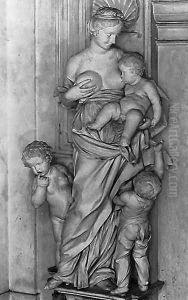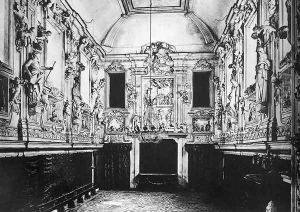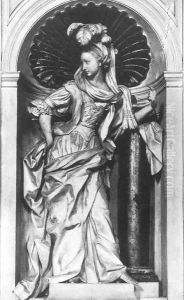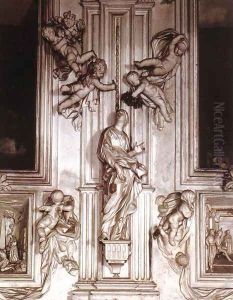Giacomo Serpotta Paintings
Giacomo Serpotta was an Italian sculptor known for his masterful work in stucco. Born on March 10, 1656, in Palermo, Sicily, he was part of a family of sculptors; both his father, Giacomo Serpotta the elder, and his brother, Gaspare Serpotta, were also sculptors. His work is emblematic of the Sicilian Baroque style and is particularly noted for its dynamic compositions, intricate details, and theatrical use of space.
Serpotta received his early training from his father and quickly developed his distinct style. His work is characterized by a unique blend of grace and expressiveness, which he achieved without the use of marble, the more traditional material of the time. Instead, he worked primarily in stucco, a medium that allowed for quicker execution and more flexibility in design. This medium, often considered inferior to marble or bronze, was elevated to a high art form through Serpotta's skill and creativity.
Throughout his career, Serpotta completed numerous commissions for churches and oratories in Sicily. One of his most famous works is the stucco decoration of the Oratorio di San Lorenzo in Palermo, completed in the late 1690s, which is considered a masterpiece of Sicilian Baroque art. His other significant works include the Oratorio del Rosario in Santa Cita and the Oratorio del Rosario in San Domenico, both also in Palermo. These works are celebrated for their complex narrative reliefs, cherubs, and allegorical figures, all created with a sense of movement and liveliness that seems to defy the limitations of the medium.
Serpotta never left Sicily, and his work remained relatively unknown outside his native island for some time. However, within Sicily, he was very much in demand and left a lasting legacy on the local artistic landscape. His influence was notable in the work of subsequent artists in the region, and his techniques continued to be used by Sicilian sculptors well into the 19th century.
Giacomo Serpotta died on February 27, 1732, in Palermo. Today, his work is recognized for its artistic value, and he is regarded as one of the greatest stucco artists of his time. His contribution to the Sicilian Baroque style has been reevaluated by art historians, and he is celebrated for his innovative approach to sculpture and for the enduring beauty of his stucco creations.



